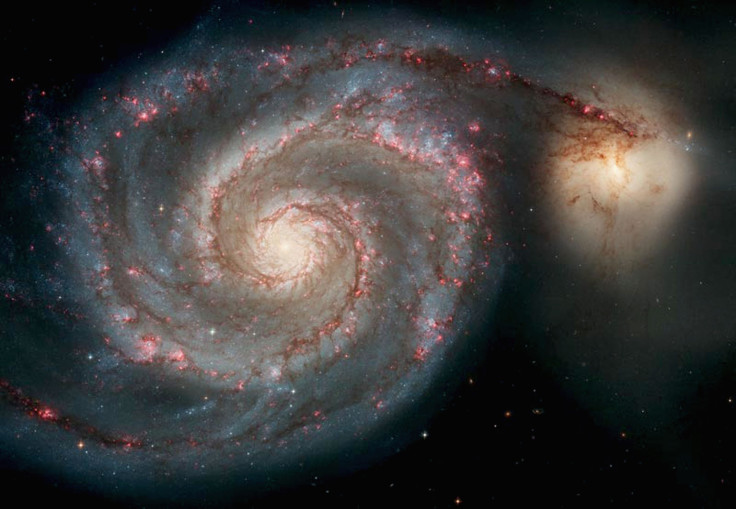NASA's Hubble Captures Stunning Spiral Galaxy M33 In Incredibly Detailed Image [PHOTO]

The spiral galaxy M33 was captured in full detail in the latest image released by NASA.
The U.S. space agency shared a stunning new mosaic of spiral galaxy M33, also known as the Triangulum galaxy, which NASA revealed is the "33rd item in astronomer Charles Messier's catalog of easily observable night-sky objects."
The incredibly detailed mosaic of the Triangulum galaxy was created from 54 different images taken by the NASA/ESA Hubble Space Telescope. It shows 25 million individual stars in a region about 14,000 light-years wide in the center of the galaxy, according to NASA's website.
#ICYMI Hubble recently captured this high-resolution mosaic of the spiral galaxy M33. Learn more about this nearby galaxy, which is the 33rd item in astronomer Charles Messier's catalog of easily observable night-sky objects: https://t.co/fhUyVNa1ai pic.twitter.com/fWKdPnHeSB
— Hubble (@NASAHubble) February 25, 2019
This nearby galaxy can be found in the triangle-shaped constellation Triangulum, hence its name. M33 is only about half the size of the Milky Way Galaxy, making it the third largest member of our Local Group of galaxies. The Andromeda Galaxy, another easily observable night-sky object, is the largest, followed by the Milky Way.
In the new image of the Triangulum galaxy, stars that are being born appear as the blue-colored regions scattered all over the mosaic. According to Hubble's observations, the star birth rate in the Triangulum galaxy is 10 times higher than the average formation in Andromeda. And the largest star-forming region in the Triangulum galaxy, NGC 604, can be observed in the image as a bright blue patch in the lower left. It is also one of the largest stellar nurseries in the entire Local Group.

According to NASA, the Triangulum galaxy has not shown signs of collisions with nearby galaxies. However, scientists believe that it may be moving toward the Milky Way like the Andromeda galaxy. As such, the impending collision between the Andromeda and Milky Way galaxies in 4.5 billion years could also involve M33.
Previous studies put the galactic collision date at 3.9 billion years, but new research based on data from Europe's Gaia spacecraft estimated that the crash will instead happen 600 million years later than what was initially calculated.
Known for his "Catalog of Nebulae and Star Clusters," Messier is a French astronomer and avid comet-hunter who died in the early 1800s. Aside from M33, his catalog also includes the Crab Nebula (M1), Andromeda Galaxy (M31), Orion Nebula (M42) and Pleiades (M45), among many others. See the complete list here.
© Copyright IBTimes 2024. All rights reserved.





















